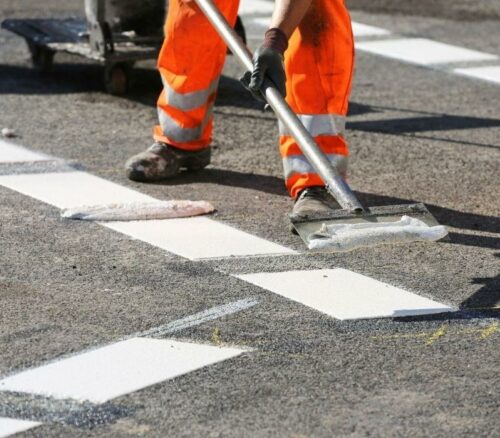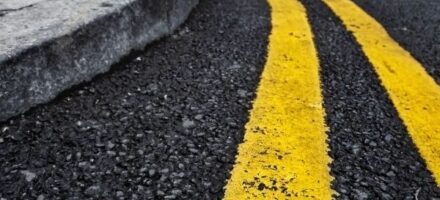

The first ever road markings that were seen in the UK were in 1918 and the first ever was the famous white line. During the 1920s the rise of painted lines on UK roads grew dramatically but it was not until 1926 that official guidelines of where and how white lines on roads should be used, were introduced. The official word, on what white lines should be used for was carried out by the First Ministry of Transport in 1926.
During the next decade the 30s white lines were used as “stop” lines, at junctions and the traffic flow was controlled by police or traffic lights at these intersections on the road network.
By 1944 the UK had Cats Eyes for nearly ten years and white lines had more strings to their bows. They were now being used to keep traffic in the correct lane. It was also used at this time to help motorists to define the boundary of the carriageway they were travelling on and those entrances to side roads and lay-bys.
The 1950s saw the arrival of the yellow lines and the restrictions on waiting, loading and unloading. By 1959 the UK Government had decided that double white lines were to be used to control overtaking. Even more road markings were introduced in the 60s with the yellow box junction, these appeared across the UK at busy road junctions to ease the flow of traffic. In 2002 the yellow line system was adapted for the new millennium.
Every road marking in the UK provides information and guidance for the road user. These markings are painted in a similar style, which means that road users will easily recognise them when approaching a stretch of road that has markings on it.
Design of Road markings
The Highways Agency claims that any road markings, which are covered under the Traffic Signs Regulations and General Directions may be legally painted onto the UK road network.
In the UK there are three ways to mark the roads with information, one way is to paint the information onto the surface another is by applying thermoplastic road markings or temporary road marking tape can be used.
Painting
The road markings are usually made with a special spray machine, it is then applied to the road at a slow pace. Painting the roads is a low cost option but it doesn't offer the grip that rival systems do. Another disadvantage is that painting is extremely hard to remove.
Hot Applied Thermoplastic Road Markings
Advantages include good durability, transfer from machine to road quickly low cost and have a high skid resistance. This form is used throughout the network as a permanent marking.
Temporary Road Marking Tape
When transferred onto the road it is durable for at least three months. It offers good skid resistance however it is quite expensive and is slow to apply due to the nature of having to lay it. Its biggest disadvantage is that it will not stick to the carriageway in wet or cold conditions.
Disclaimer: The information in the article is for general purpose information only and should not be constituted as legal advice. This article has been produced by a third party and Jardine Motors does not take any responsibility for the completeness, accuracy, or reliability with respect to the website or the information provided. Article last updated March 2016.



